#Design and innovation
Explore tagged Tumblr posts
Text
Top Skills for Biomedical Engineers: Research, Design & Regulatory Compliance
Biomedical engineering is one of the fastest-growing and most impactful fields in modern science. It stands at the intersection of healthcare, technology, and innovation. Pursuing B.Tech Biomedical Engineering equips students with the tools to improve patient care, develop medical technologies, and support life-saving innovations. At the Best Biomedical Engineering College in Pune, like ADYPU , students don’t just learn technical skills—they develop a deep understanding of the human body, regulatory environments, and the power of innovation. Let’s explore the top skills every biomedical engineer must master for a successful career in healthcare technology.
Research & Analytical Thinking: The Core of Innovation
Biomedical engineers are at the forefront of medical research. Whether it's designing prosthetics, developing diagnostic equipment, or improving drug delivery systems, research and analytical thinking are essential. Students at Biomedical Engineering ADYPU are trained in problem-solving and data interpretation from day one. The curriculum emphasizes critical thinking and real-world research projects, enabling students to explore topics like tissue engineering, bioinformatics, and nanomedicine. As part of the Admissions for B.Tech Biomedical at ADYPU, students are introduced to interdisciplinary learning that blends biology, chemistry, and mechanical engineering to drive meaningful discoveries in Healthcare Engineering.
Design & Innovation: Creating Technology That Heals
One of the most exciting aspects of B.Tech Biomedical Engineering is the opportunity to design life-enhancing devices. From MRI machines to wearable health monitors, biomedical engineers are behind many revolutionary inventions. At the Best Biomedical Engineering College in Pune, students get hands-on experience in CAD design, prototyping, and testing medical devices in state-of-the-art labs. The Biomedical Engineering ADYPU curriculum includes design thinking and innovation labs where students can create, experiment, and improve real medical technologies. The emphasis is not just on building devices but ensuring that these solutions address patient safety, usability, and clinical needs.
Regulatory Knowledge & Compliance: Ensuring Patient Safety
In biomedical engineering, understanding regulatory compliance is just as important as technical knowledge. Engineers must be familiar with FDA regulations, ISO standards, and other healthcare laws to ensure their innovations are safe and approved for clinical use. At Biomedical Engineering ADYPU, students are trained in global compliance protocols and ethical considerations. This is a vital part of the learning process, especially for students preparing for Biomedical Engineering Placements in companies dealing with medical equipment, pharmaceuticals, or clinical trials. Regulatory knowledge ensures engineers can take their products from lab to market without legal or ethical hurdles.
Communication & Collaboration: Working Across Disciplines
Biomedical engineers regularly collaborate with doctors, researchers, software developers, and policymakers. Effective communication and teamwork are essential for success in such a diverse field. At ADYPU, one of the Top Biomedical Engineering Colleges, students work on collaborative capstone projects, industry internships, and interdisciplinary workshops. Through these experiences, they gain skills in presenting technical findings, writing reports, and working effectively with both technical and non-technical teams. Strong communication skills help students stand out in interviews and excel in Biomedical Engineering Placements, especially in roles involving client interaction, research collaboration, and product presentations.
Career Readiness: Preparing for the Industry
The biomedical engineering field is rapidly evolving, with increasing demand in hospitals, research labs, pharmaceutical companies, and health-tech startups. ADYPU prepares its students not just academically but professionally. Students are guided through soft skills development, resume building, interview preparation, and industry certifications. With a clear understanding of Biomedical Engineering Eligibility, students can also prepare for competitive exams and the Biomedical Engineering Entrance Exam for higher studies or specialized certifications. The robust support system at ADYPU ensures every student is ready for the diverse opportunities waiting after graduation.
Conclusion: The Future Begins at ADYPU
Choosing the right college is crucial for a successful biomedical engineering career. With its strong academic foundation, industry-focused curriculum, and supportive faculty, ADYPU stands out as the Best Biomedical Engineering College in Pune. The Admissions for B.Tech Biomedical program is now open, offering a perfect blend of research, design, and regulatory learning. If you’re passionate about transforming lives through innovation, Biomedical Engineering ADYPU is your gateway to an exciting future in Healthcare Engineering.
0 notes
Text

thank you toby We All Agree
#deltarune#kris dreemurr#susie#odie's art#ignore that i can't decide what kris is wearing#new & innovative character design gag#it's different in every piece i draw of them
4K notes
·
View notes
Link
#Design and Innovation#Elections#Approval Voting#Branding#Center for Election Science#Chris Raleigh#Contextomy#Michael Ruvinsky#Nina Taylor
0 notes
Photo

"Vase" (1990), Brierley Hill ➤ Clear glass unzips reality
#gray#contemporary design#1990s#white#sculpture#brierley hill#england#conceptual art#glass art#1990#innovative design
884 notes
·
View notes
Text
How lock-in hurts design

Berliners: Otherland has added a second date (Jan 28) for my book-talk after the first one sold out - book now!

If you've ever read about design, you've probably encountered the idea of "paving the desire path." A "desire path" is an erosion path created by people departing from the official walkway and taking their own route. The story goes that smart campus planners don't fight the desire paths laid down by students; they pave them, formalizing the route that their constituents have voted for with their feet.
Desire paths aren't always great (Wikipedia notes that "desire paths sometimes cut through sensitive habitats and exclusion zones, threatening wildlife and park security"), but in the context of design, a desire path is a way that users communicate with designers, creating a feedback loop between those two groups. The designers make a product, the users use it in ways that surprise the designer, and the designer integrates all that into a new revision of the product.
This method is widely heralded as a means of "co-innovating" between users and companies. Designers who practice the method are lauded for their humility, their willingness to learn from their users. Tech history is strewn with examples of successful paved desire-paths.
Take John Deere. While today the company is notorious for its war on its customers (via its opposition to right to repair), Deere was once a leader in co-innovation, dispatching roving field engineers to visit farms and learn how farmers had modified their tractors. The best of these modifications would then be worked into the next round of tractor designs, in a virtuous cycle:
https://securityledger.com/2019/03/opinion-my-grandfathers-john-deere-would-support-our-right-to-repair/
But this pattern is even more pronounced in the digital world, because it's much easier to update a digital service than it is to update all the tractors in the field, especially if that service is cloud-based, meaning you can modify the back-end everyone is instantly updated. The most celebrated example of this co-creation is Twitter, whose users created a host of its core features.
Retweets, for example, were a user creation. Users who saw something they liked on the service would type "RT" and paste the text and the link into a new tweet composition window. Same for quote-tweets: users copied the URL for a tweet and pasted it in below their own commentary. Twitter designers observed this user innovation and formalized it, turning it into part of Twitter's core feature-set.
Companies are obsessed with discovering digital desire paths. They pay fortunes for analytics software to produce maps of how their users interact with their services, run focus groups, even embed sneaky screen-recording software into their web-pages:
https://www.wired.com/story/the-dark-side-of-replay-sessions-that-record-your-every-move-online/
This relentless surveillance of users is pursued in the name of making things better for them: let us spy on you and we'll figure out where your pain-points and friction are coming from, and remove those. We all win!
But this impulse is a world apart from the humility and respect implied by co-innovation. The constant, nonconsensual observation of users has more to do with controlling users than learning from them.
That is, after all, the ethos of modern technology: the more control a company can exert over its users ,the more value it can transfer from those users to its shareholders. That's the key to enshittification, the ubiquitous platform decay that has degraded virtually all the technology we use, making it worse every day:
https://pluralistic.net/2023/02/19/twiddler/
When you are seeking to control users, the desire paths they create are all too frequently a means to wrestling control back from you. Take advertising: every time a service makes its ads more obnoxious and invasive, it creates an incentive for its users to search for "how do I install an ad-blocker":
https://www.eff.org/deeplinks/2019/07/adblocking-how-about-nah
More than half of all web-users have installed ad-blockers. It's the largest consumer boycott in human history:
https://doc.searls.com/2023/11/11/how-is-the-worlds-biggest-boycott-doing/
But zero app users have installed ad-blockers, because reverse-engineering an app requires that you bypass its encryption, triggering liability under Section 1201 of the Digital Millennium Copyright Act. This law provides for a $500,000 fine and a 5-year prison sentence for "circumvention" of access controls:
https://pluralistic.net/2024/01/12/youre-holding-it-wrong/#if-dishwashers-were-iphones
Beyond that, modifying an app creates liability under copyright, trademark, patent, trade secrets, noncompete, nondisclosure and so on. It's what Jay Freeman calls "felony contempt of business model":
https://locusmag.com/2020/09/cory-doctorow-ip/
This is why services are so horny to drive you to install their app rather using their websites: they are trying to get you to do something that, given your druthers, you would prefer not to do. They want to force you to exit through the gift shop, you want to carve a desire path straight to the parking lot. Apps let them mobilize the law to literally criminalize those desire paths.
An app is just a web-page wrapped in enough IP to make it a felony to block ads in it (or do anything else that wrestles value back from a company). Apps are web-pages where everything not forbidden is mandatory.
Seen in this light, an app is a way to wage war on desire paths, to abandon the cooperative model for co-innovation in favor of the adversarial model of user control and extraction.
Corporate apologists like to claim that the proliferation of apps proves that users like them. Neoliberal economists love the idea that business as usual represents a "revealed preference." This is an intellectually unserious tautology: "you do this, so you must like it":
https://boingboing.net/2024/01/22/hp-ceo-says-customers-are-a-bad-investment-unless-they-can-be-made-to-buy-companys-drm-ink-cartridges.html
Calling an action where no alternatives are permissible a "preference" or a "choice" is a cheap trick – especially when considered against the "preferences" that reveal themselves when a real choice is possible. Take commercial surveillance: when Apple gave Ios users a choice about being spied on – a one-click opt of of app-based surveillance – 96% of users choice no spying:
https://arstechnica.com/gadgets/2021/05/96-of-us-users-opt-out-of-app-tracking-in-ios-14-5-analytics-find/
But then Apple started spying on those very same users that had opted out of spying by Facebook and other Apple competitors:
https://pluralistic.net/2022/11/14/luxury-surveillance/#liar-liar
Neoclassical economists aren't just obsessed with revealed preferences – they also love to bandy about the idea of "moral hazard": economic arrangements that tempt people to be dishonest. This is typically applied to the public ("consumers" in the contemptuous parlance of econospeak). But apps are pure moral hazard – for corporations. The ability to prohibit desire paths – and literally imprison rivals who help your users thwart those prohibitions – is too tempting for companies to resist.
The fact that the majority of web users block ads reveals a strong preference for not being spied on ("users just want relevant ads" is such an obvious lie that doesn't merit any serious discussion):
https://www.iccl.ie/news/82-of-the-irish-public-wants-big-techs-toxic-algorithms-switched-off/
Giant companies attained their scale by learning from their users, not by thwarting them. The person using technology always knows something about what they need to do and how they want to do it that the designers can never anticipate. This is especially true of people who are unlike those designers – people who live on the other side of the world, or the other side of the economic divide, or whose bodies don't work the way that the designers' bodies do:
https://pluralistic.net/2022/10/20/benevolent-dictators/#felony-contempt-of-business-model
Apps – and other technologies that are locked down so their users can be locked in – are the height of technological arrogance. They embody a belief that users are to be told, not heard. If a user wants to do something that the designer didn't anticipate, that's the user's fault:
https://www.wired.com/2010/06/iphone-4-holding-it-wrong/
Corporate enthusiasm for prohibiting you from reconfiguring the tools you use to suit your needs is a declaration of the end of history. "Sure," John Deere execs say, "we once learned from farmers by observing how they modified their tractors. But today's farmers are so much stupider and we are so much smarter that we have nothing to learn from them anymore."
Spying on your users to control them is a poor substitute asking your users their permission to learn from them. Without technological self-determination, preferences can't be revealed. Without the right to seize the means of computation, the desire paths never emerge, leaving designers in the dark about what users really want.
Our policymakers swear loyalty to "innovation" but when corporations ask for the right to decide who can innovate and how, they fall all over themselves to create laws that let companies punish users for the crime of contempt of business-model.
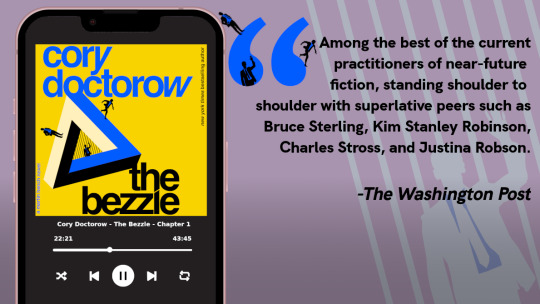
I'm Kickstarting the audiobook for The Bezzle, the sequel to Red Team Blues, narrated by @wilwheaton! You can pre-order the audiobook and ebook, DRM free, as well as the hardcover, signed or unsigned. There's also bundles with Red Team Blues in ebook, audio or paperback.

If you'd like an essay-formatted version of this post to read or share, here's a link to it on pluralistic.net, my surveillance-free, ad-free, tracker-free blog:
https://pluralistic.net/2024/01/24/everything-not-mandatory/#is-prohibited

Image: Belem (modified) https://commons.wikimedia.org/wiki/File:Desire_path_%2819811581366%29.jpg
CC BY 2.0 https://creativecommons.org/licenses/by/2.0/deed.en
#pluralistic#desire paths#design#drm#everything not mandatory is prohibited#apps#ip#innovation#user innovation#technological self-determination#john deere#twitter#felony contempt of business model
3K notes
·
View notes
Text
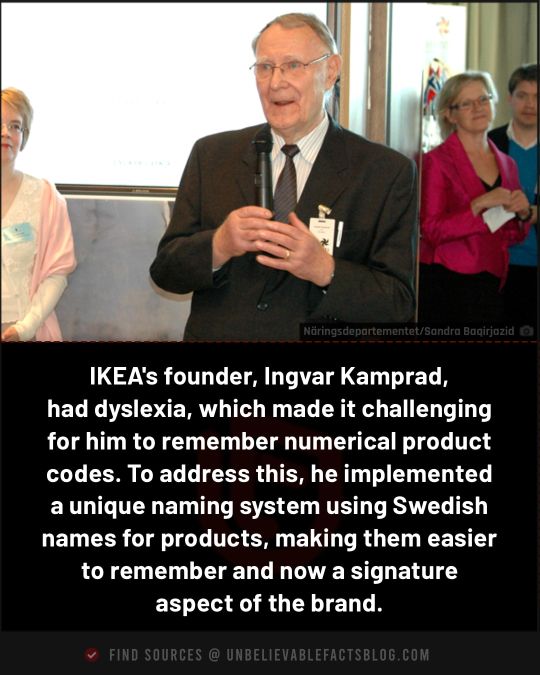
204 notes
·
View notes
Text

The welfare of the people is the highest goal of the Party! (1982)
#ussr#soviet#poster#artist unknown#communist party of the soviet union#communism#socialism#design#vladimir lenin#labor#innovation
156 notes
·
View notes
Text







Mutti Canteen and Restaurant, Parma - Carlo Ratti
#Carlo Ratti#architecture#design#building#modern architecture#interiors#minimal#modern#contemporary architecture#innovative#rammed earth#roof#green roof#planting#plants#cool architecture#amazing design#restaurant#mutti#tomatoes#produce#canteen#curved#organic#bar#window#grass#italy#parma#italian architecture
75 notes
·
View notes
Text


when i can't focus on anything i'm supposed to be doing, i draw these two being fashionable, because if I can't wear cool clothes then by god i'll make them do it
Lamb's wearing an outfit inspired by an old Oh! My Goddess panel, and Nari's wearing something based on a nehru jacket ensemble thing I saw ages ago and still love
debated bandages for his arms but tbh by the end of most of my AUs he's purposely forgoing them and owning the scars so i left them bare
#cult of the lamb#cotl lamb#cotl narinder#character design#clothing design#i've also graduated from blank backgrounds to gradients#truly i am innovative#olrinarts
89 notes
·
View notes
Text
When we think of sustainable materials, bamboo, cork, recycled stone and reclaimed teak often come to mind. These building and surface materials are used extensively in both residential and commercial projects, enough to solidify them as the eco-friendly future of established architectural practices.
But what if we went even further? Creative and experimental designers worldwide are embracing much more unusual sustainable materials in a wide range of projects, be these sturdy floorboards and insulating panels, or small-scale decorative elements such as lamps, trays, vases and other furnishings. With designs hailing from Singapore and Indonesia, as well as distant studios in Italy and Palestine, here are the materials of tomorrow.

Mogu’s mycelium floor tiles
Mushroom filaments may not seem like the sturdiest base for hardwearing floors, but the Italian designers behind Mogu would argue otherwise. Transformed into resilient tiles appropriate for luxury residences and even commercial spaces, the mycelium structure is topped with a layer of bio-based resin, granting it resistance to scratches and abrasions rivalling traditional flooring materials.
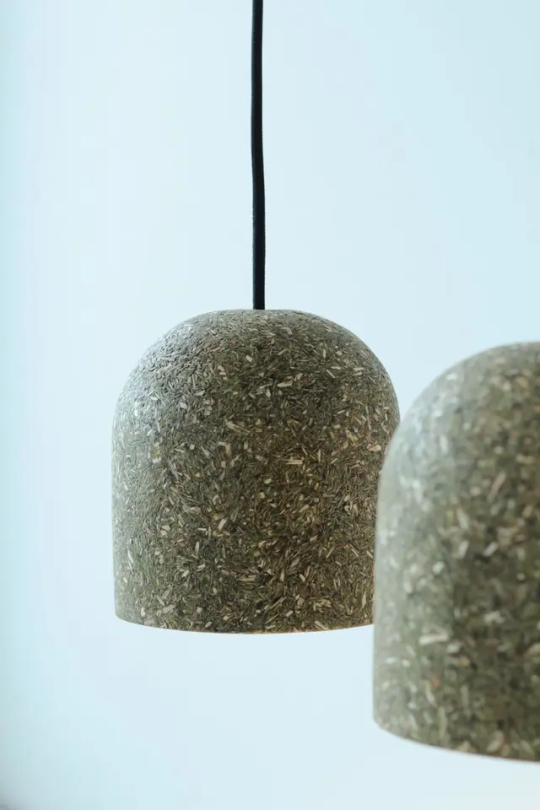
Orange peel and pine needles make up the sustainable lampshades by Caracara Collective
Turning orange peel into useable furnishings and décor pieces is no small feat, yet the people behind the circularity-focused Caracara Collective in Finland have mastered this singular art. Inspired by the abundance of the natural, inherently sustainable materials around them, the designers created a series of lampshades made of orange peel, as well as pine needles from discarded Christmas trees.
As the collective puts it: “It takes around 20 squeezed oranges to create one lampshade. In other words, each lampshade is the by-product of someone drinking two litres of orange juice.”
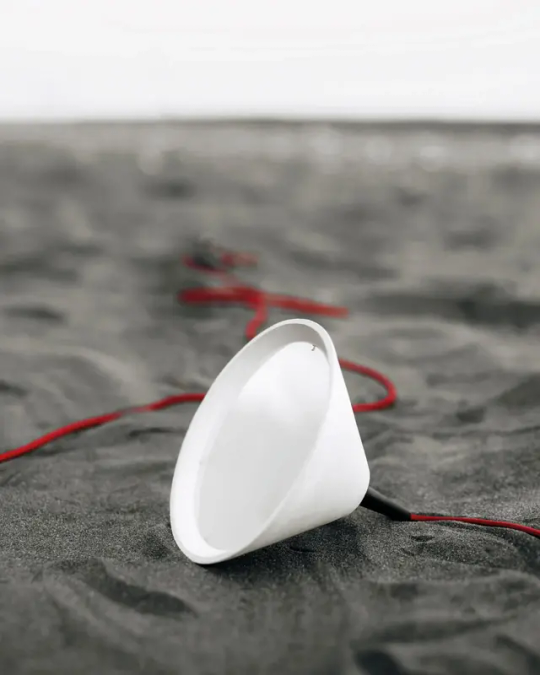
Markos Design’s Ostra lamp, made of discarded oyster shells
Discarded oyster shells are similarly repurposed on the island of Cyprus, transformed by Markos Design into Ostra, a ceramic-like biomaterial. Ostra is worked into statement lamp designs, naturally hardwearing thanks to the oysters’ high concentration of calcium carbonate, which also lends cement and concrete considerable strength.
#solarpunk#solar punk#reculture#solarpunk aesthetic#eco-design#materials innovation#solarpunk futures
140 notes
·
View notes
Text

REFLECTIONS OF YOURSELF
#coast#coast innovations#art#design#adobe illustrator#graphic design#grunge#streetwear#adobe photoshop#fashion#artwork#digital art#metal#mirror#vintage#goth#gothic#dark#horror
54 notes
·
View notes
Text

Design meme - UI & UX problems 😅
#web design#design meme#tumblr memes#comics#funny pictures#ui ux design#us#nevada#los angeles#app development#uxfails#ui#design thinking#accesibility#design innovation#ideas
61 notes
·
View notes
Text
it is once again time for me to win an argument, unless you all disagree with me, in which case this time I will put down my phone, exhale a short breath through my nose, and wade into the sea in an attempt to subsume my identity into something greater than myself. please reblog for a greater sample size and to inflict psychic damage upon me with your commentary.
caveats: no vanilla extract/both/neither/I'm bald, we die on these hills. it does not matter for the purposes of option 1 in this case what the universal imperatives are, just that (your stance is) they exist, but if you want to define what they are in reblog commentary I may then hold a deathmatch of everyone's definitions in a future poll because that would be funny to me.
#poll#guerrilla philosophising#I expect this poll to go over particularly well on the website that pisses on the poor#but the previous poll taught me that I truly cannot predict the wild array of viewpoints that exist in the world#I'm waffling on excluding moral nihilism so if that is your sincerely held ethical belief I apologise directly to you#but you must be doing something to exist peaceably in a society (and therefore have freedom enough for an internet connection)#that resembles either following a universal or individual set of moral rules even if your belief is they're imaginary#so pick the closest one and yell at me in the tags.#otherwise I am excited to discover the new and innovative ways I am failing at Good Survey Design
62 notes
·
View notes
Text
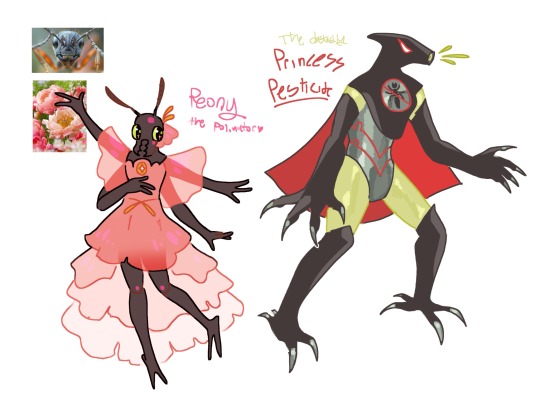
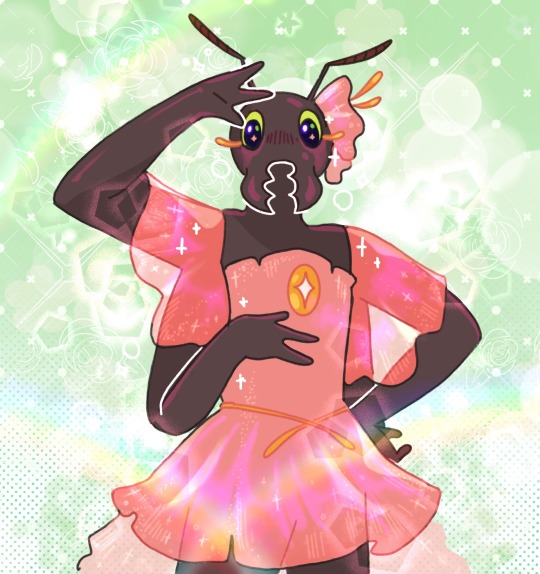
Hi. what if an ant was a magical girl.
#I spend all day every day brainstorming how to get the average normie little girl into bugs#my latest innovation#my art#bugs#bug art#magical girl#mahou shoujo#peony#flowers#character design#had fun doing all the stupid shoujo effects lol
37 notes
·
View notes
Text

Most airplanes are painted white to reflect sunlight, keeping the plane cooler and reducing the need for air conditioning, which helps save fuel.
73 notes
·
View notes